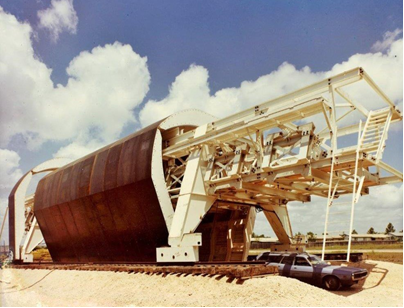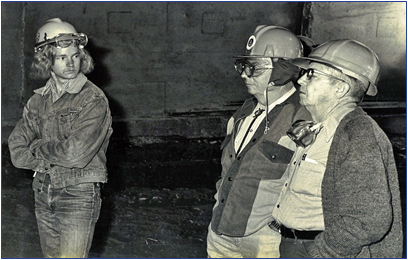History of the Dispute Board process and the DRBF
Timeline of Dispute Board process and the DRBF
1972
|
U.S. National Committee on Tunneling Technology sponsored a study of contracting practices throughout the world, to develop recommendations for improved contracting methods in the United States. The study concluded that the deleterious effect of disputes and litigation upon the efficiency of the construction process was a major cause of rapidly escalating construction costs. Results of the study were presented in the “Better Contracting for Underground Construction” report, published in 1974 — and the DB concept was born. |
1975
|
The DB process was first used during construction of the second bore of the Eisenhower Tunnel for Interstate 70 in Colorado. The original DB members included Al Mathews, Palmer King and Charles McGraw.
|
1989
|
The American Society of Civil Engineers promoted the DB concept in the first edition of its manual, “Avoiding and Resolving Disputes During Construction." This publication was updated and revised in 1991 by the Technical Committee on Contracting Practices of the Underground Technology Research Council. Notable among the 12 committee members were A.A. “Al” Mathews, P.E. “Joe” Sperry and Robert J. “Bob” Smith, three of the eventual founders of the Dispute Resolution Board Foundation (DRBF). |
1995
|
World Bank published a new edition of its standard bidding document, “Procurement of Works,” which provided the borrower with three options for the settlement of disputes, including the use of a three-person DB. The three-person DB was made mandatory for contracts in excess of US$50 million.
|
1996
|
The DRBF was established as a non-profit organization by a group of professionals involved in construction dispute resolution. Their goal was to promote the use of the DB process and to serve as an educational resource and information exchange for owners, contractors and DB members. The first book on DBs, the “Construction Dispute Review Board Manual,” written by DRBF founders Robert Matyas, Al Mathews, Bob Smith and Joe Sperry, was published that year by McGraw-Hill. |
2001
|
The DRBF awards the first “Al Mathews Award for Dispute Board Excellence,” an honor now given annually for exemplary service in advancing the use of the DB process. |
2004
|
The International Chamber of Commerce (ICC) introduced its DB rules, which allowed users to choose between a Dispute Review Board, a Dispute Adjudication Board and a Combined Dispute Board (a hybrid allowing for nonbinding recommendations in some cases and binding decisions in others). The ICC’s rules were subsequently updated in 2015 to incorporate, among other things, the concepts of dispute avoidance and facilitation as part of the DB process.
|
2005
|
As part of the United Nations’ Millennium Goals, the heads of procurement of many development banks and ‘multilateral lending agencies (“MDBs”) partnered with FIDIC to develop the “FIDIC MDB Harmonised Conditions of Contract,” or “Pink Book,” which included a DB process for both dispute avoidance and dispute resolution. Developing countries now widely use these contract conditions, updated in 2010, for major infrastructure projects. Subsequently, nine MDBs around the world have adopted the DB process.
In Australia, the number of DBs has grown exponentially since 2005. Most major public infrastructure projects now include a DB process within their contractual framework, including several large Public Private Partnership (PPP) contracts. Australia has also pioneered a trend away from the traditional DB role of dispute resolution to a more proactive form of DB, where the primary role is dispute avoidance.
|
2008
|
Since 2008, Japan’s International Cooperation Agency (JICA) has actively promoted the use of DBs for overseas projects financed by JICA Official Development Assistance loans, often called ODA loans. DBs are a mandatory inclusion in JICA’s procurement guidelines and standard bidding documents. JICA has also developed its own DB manual and conducted extensive training for DB members and users.
|
2014
|
The U.K. Chartered Institute of Arbitrators published the first edition of its international “Dispute Board Rules.” These rules (as with the ICC’s rules) extend the DB process beyond construction contracts to any medium- or long-term project, construction or otherwise.
|
2017
|
The DRBF introduced an “Excellence in Dispute Avoidance & Resolution Award,” given annually to project teams using the DB process.
|
2019
|
The DRBF publishes the Dispute Board Manual: A Guide to Best Practices and Procedures. This book is a complete update to the document originally published in 2007 and is available as a free download from this website.
|
The Project that Started it All!

Final lining form and jumbo, with 1970s car for perspective.
The Eisenhower Memorial Tunnels located approximately 60 miles west of Denver in Colorado are two vehicular tunnels designed to carry four lanes of Interstate 70 traffic under the continental divide at an elevation of 11,000 feet. The four lanes are carried through twin bores each approximately 1.7 miles long and in a 46 foot horseshoe shape. The owner was the Colorado Department of Highways, now the Colorado Department of Transportation. From November 1967 to March 1973, a joint venture group called “Strait Creek Constructors” drove bore one, the North Tunnel. The job was bid at $49.6 million and had a projected construction time of four years. It ended up costing $109 million and took almost six years to complete.
Dispute Review Board Introduced

DRB Members Palmer King and Charles McGraw meet with a geologist.
The second bore of the Eisenhower Tunnel was bid on August 8, 1975 and was based on a carefully conceived design laying out in detail the sequence and methods of construction required. The successful bidder was a joint venture of Peter Kiewit Sons Inc. and Brown & Root, Inc. The bid was $102.8 million with the second bidder only $189,000 higher. The contract included a DRB, and Al Mathews, Palmer King and Charles McGraw were appointed to the first board.
The design and construction of the second bore of the Eisenhower Tunnel was based on information obtained from the difficult experience of the first bore. In essence the tunnel included three well-defined and distinct zones:
- A two and three drift tunnel support to be used on the east side (3266 ft.)
- A multiple drifts support system in the middle (503 ft.)
- A steel-supported horseshoe shape tunnel on the west side (4155 ft.)
Construction of the second bore of the Eisenhower Tunnel was a success in every sense of the word. The owner and contractor practiced partnering before it became fashionable. The DRB heard three disputes, owner-contractor relations were cordial throughout construction, and all parties were pleased at the end of the project. The final cost of the project, including many owner requested change orders, was approximately $108 million.
The job was the first to use a formal DRB as part of the original contract documents.
|